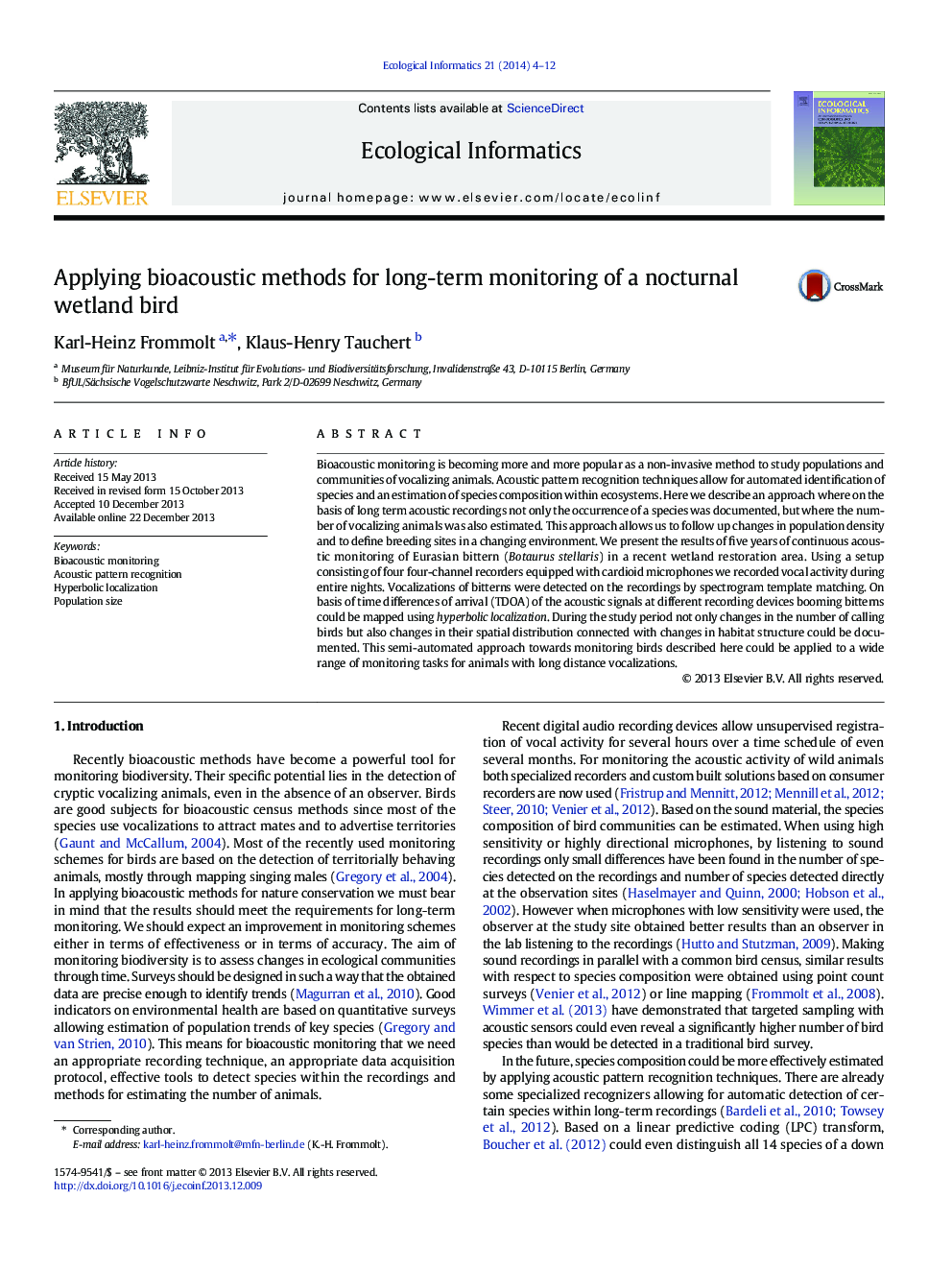| کد مقاله | کد نشریه | سال انتشار | مقاله انگلیسی | نسخه تمام متن |
|---|---|---|---|---|
| 4374890 | 1617211 | 2014 | 9 صفحه PDF | دانلود رایگان |
Bioacoustic monitoring is becoming more and more popular as a non-invasive method to study populations and communities of vocalizing animals. Acoustic pattern recognition techniques allow for automated identification of species and an estimation of species composition within ecosystems. Here we describe an approach where on the basis of long term acoustic recordings not only the occurrence of a species was documented, but where the number of vocalizing animals was also estimated. This approach allows us to follow up changes in population density and to define breeding sites in a changing environment. We present the results of five years of continuous acoustic monitoring of Eurasian bittern (Botaurus stellaris) in a recent wetland restoration area. Using a setup consisting of four four-channel recorders equipped with cardioid microphones we recorded vocal activity during entire nights. Vocalizations of bitterns were detected on the recordings by spectrogram template matching. On basis of time differences of arrival (TDOA) of the acoustic signals at different recording devices booming bitterns could be mapped using hyperbolic localization. During the study period not only changes in the number of calling birds but also changes in their spatial distribution connected with changes in habitat structure could be documented. This semi-automated approach towards monitoring birds described here could be applied to a wide range of monitoring tasks for animals with long distance vocalizations.
Journal: Ecological Informatics - Volume 21, May 2014, Pages 4–12
